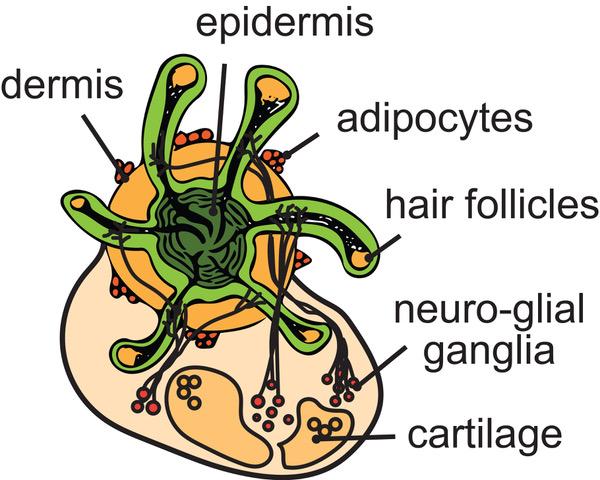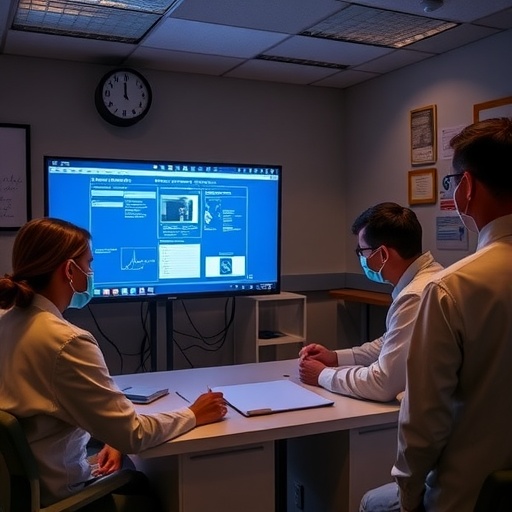Oregon Health & Science University Ph.D. candidate grew organoids at Stanford University lab

Credit: Karl R. Koehler and Jiyoon Lee, Boston Children’s Hospital/Harvard Medical School.
A new, hair-sprouting dollop of human skin created in the lab might one day help prevent hair loss.
Organoids are small, lab-grown cell groupings are designed to model real-world organs -in this case, skin. A paper published in Nature describes the hairy creation as the first hair-baring human skin organoid made with pluripotent stem cells, or the master cells present during early stages of embryonic development that later turn into specific cell types.
The hirsute organoid’s development was led by Karl Koehler, Ph.D., formerly of Indiana University School of Medicine and now at Boston Children’s Hospital. An Oregon Health & Science University graduate student, Benjamin Woodruff, contributed by helping make the organoids as a post-baccalaureate research technician in the Stanford University lab of Stefan Heller, Ph.D.
“This makes it possible to produce human hair for science without having to take it from a human,” explained Woodruff, who now is completing his first year of cell and developmental biology graduate studies at OHSU. “For the first time, we could have, more or less, an unlimited source of human hair follicles for research.”
Having access to more hair-growing skin can help researchers better understand hair growth and development – and maybe even provide clues needed to reverse a retreating hair line.
###
REFERENCE: Lee J, Rabbani C, Gao H, Steinhart M, Woodruff BW, Pflum Z, Kim A, Heller S, Liu Y, Shipchandler TZ, Koehler KR. Hair-bearing human skin generated entirely from pluripotent stem cells. Nature, June 3, 2020, DOI: 10.1038/s41586-020-2352-3, https:/
Media Contact
Franny White
[email protected]
Related Journal Article
http://dx.




